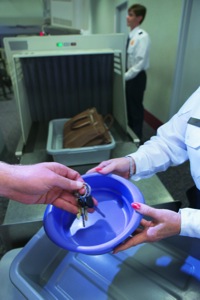
Sept. 20, the first day gay, lesbian and bisexual servicemembers could legally serve openly, I wasn’t in San Diego for the event at The Center. Instead, I was at Harvard University as the keynote speaker for the Ivy League university’s official event celebrating that historic day.
I was humbled and honored to be invited, and to address that esteemed institution on so momentous a day.
I was selected by Harvard to speak because I played a small part in the repeal of Don’t Ask, Don’t Tell by engaging in direct actions with GetEqual on two separate occasions. With other LGBT community activists, I handcuffed myself to the White House fence. I was the only transgender veteran in the group of LGBT activists to do so.
Students at Harvard took issue with administrators for recently bringing back the U.S. Navy Reserve Officers’ Training Corps (ROTC) program, because intersex people born with ambiguous genitalia and transgender people are still not welcome to serve in the military. I believe addressing the concerns of those students was another reason Harvard University invited me.
My function in speaking at Harvard was to point out that transgender people are still not welcome in the U.S. military services. And I did.
On a personal note, traveling to and from Harvard was relatively uneventful, in the sense that all of the flights I took were on time; and my luggage made it to and from Boston Logan airport without getting lost.
But, there was a notable occurrence at Boston’s airport on my return trip. After going through one of the airport’s body-imaging scanners, I was pulled aside for a full search. The TSA officer on the other side of the scanner said words to the effect of, “Understand. The passenger needs to be searched with emphasis on the hips and buttocks area.” into her radio.
Through my own filtering, I heard that “hips and buttocks” is code for “genitals and butt crack.”
I know, having talked to many trans people about these TSA full-body searches, that the idea of having to go through one of these searches is a little bit frightening, disconcerting – or both.

One never knows exactly how a TSA officer is going to respond to a trans passenger when, as a result of being searched, the officer learns the passenger is transgender. Will the officer act professionally or not? That’s usually a question a trans person asks themselves in these kinds of situations.
Then there is the concern regarding why one was selected for a search in the first place. Was one selected for a full body search because one is trans?
It’s not like there aren’t real concerns. In September 2003, the Department of Homeland Security released an advisory which said, “Terrorists will employ novel methods to artfully conceal suicide devices. Male bombers may dress as females in order to discourage scrutiny.”
Back to my own search. After stripping off the required items for a body imaging scan, I was left wearing a white tee shirt, a pair of white socks, a pair of back zip blue jeans and appropriate undergarments. Then, I went through the body imaging scanner. I stepped out of the scanner and stood at the line waiting to be cleared. That’s when I heard a radio discussion about how I needed a full body search – a search with emphasis on the hips and buttocks area.
In a secluded room, one of two female TSA officers began explaining how she was going to search me. When she was done explaining I told her, “Just so you’re aware, I’m transgender.”
The officer then asked me if I’d prefer to be searched by male officers, and I told her no.
Then, while one officer acted as a witness, the other officer searched me. The searching officer was surprised to find my jeans had a rear zip. It dawned on me that this was also likely a surprise for the TSA officer who viewed the body imaging scan.
It also occurred to me that I was likely singled out for a full body search because of the style of jeans I was wearing, not because I was trans.
I wasn’t afraid because I didn’t care if the officers knew I was trans, and because I knew these officers accomplishing the searches were just trying to do their jobs.
That said, it doesn’t mean that as a trans woman I’m not concerned about being selected for a TSA full body search, and being identified as trans. If singled out again, I’ll likely have the same question about why I was selected. I’ll also likely be concerned about whether or not the TSA officers selected to search me are going to act professionally.











ROTFL! Sandeen remains as delusional as ever. He was clearly identified as a male in spite of his much ballyhooed “surgery.” I seriously doubt that TSA pulls women for wearing jeans with the zipper in the back, though maybe they though Sandeen had them on backwards, since he clearly needs one in the front.
And of course, Sandeen had “no problem” informing them that he is “trans.” That is the entirety of his identity.
Transsexuals who are pre-op, and those, like Sandeen who are transgender, simply have to face the fact that they are going to be subject to scrutiny. They may not like it, but security trumps other considerations. This is particularly true for those like Sandeen who are simply engaging in delusional fantasies.
Oh, and if anyone pictures Sandeen addressing some massive rally at Harvard, the truth is, there were 30 people there, and not all of them stayed through. Too funny….
Wow, you really have to pity those who have nothing better to do than spew hate.
Autumn, it makes me happy to know that at least one transgender person was treated with respect by the TSA.
Sorry sir, not hate at all….just reality.